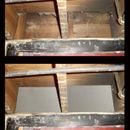Will fireblocking over balloon framing stop airflow and promote rot?
Conditions: Balloon framed construction, house built in 1930, Southern Connecticut region
Does installing a fire-stop or Fireblocking where the sill plate and rim joist meet, block airflow and promote rot in the walls where moisture may get trapped?
I have heard conflicting views as this may have become code in some areas, yet will create the risk of future rot in the walls.
I own a 1930 Tudor influenced , 2 story colonial in Connecticut. It was built using Balloon Framing construction, which left open voids on all sides, from basement to attic. I recently framed-in the basement and finished it as a living space. I inserted pink insulation in the “Balloon” voids as far as I could reach above the sill plate, and closed the balloon voids with panels of drywall, to create a fire stop and minimalize heat escape. I am not sure if this will stagnate the airflow and promote rot in the walls of my home, or if there will still be enough airflow to let moisture out of the balloon voids behind the walls? Thoughts? Suggestions?
GBA Detail Library
A collection of one thousand construction details organized by climate and house part











Replies
Hi there Selectiveeye (be great to have a real name for the GBA Q&A community to use) -
You did not mention the key principle in this: continuous air control layer. Air moving the way you design for to ventilate and dry an assembly is a good thing. Air moving by happenstance--air leakage--often wets as much if not more than it dries assemblies.
Fire stops can compartmentalize cavities and reduce convect currents but regardless: continuous air control layers are key in any climate, even mild ones.
Peter